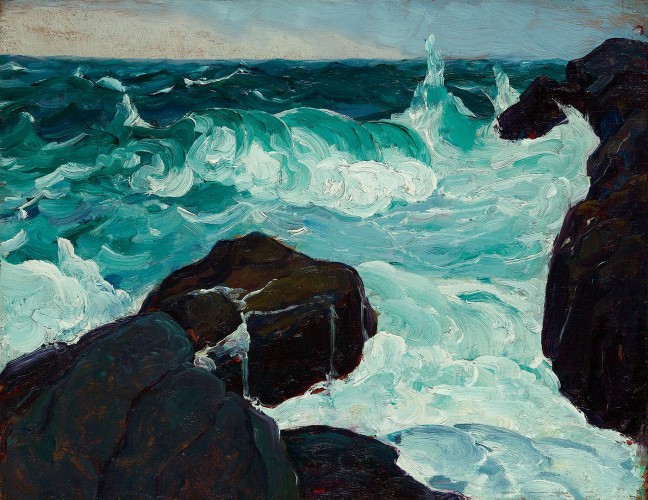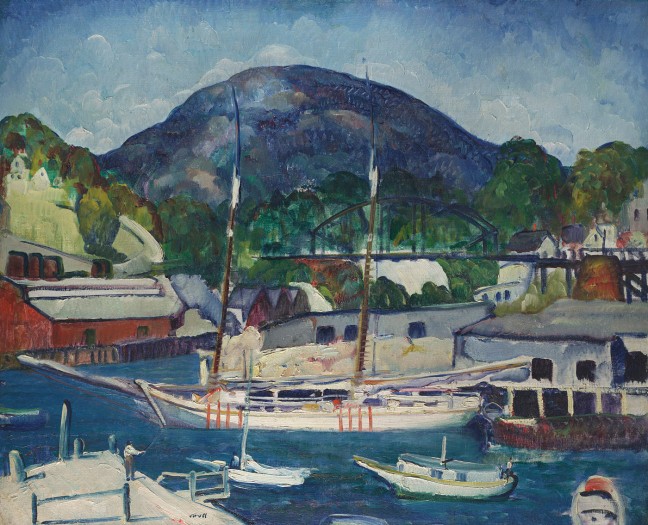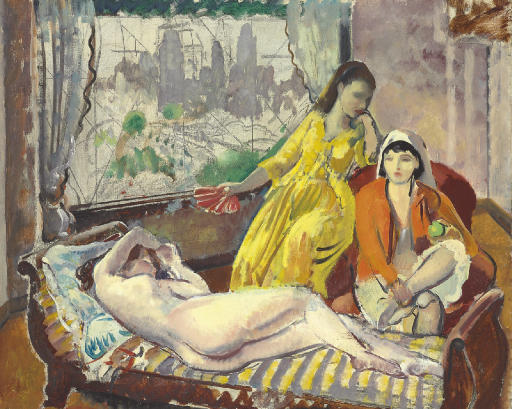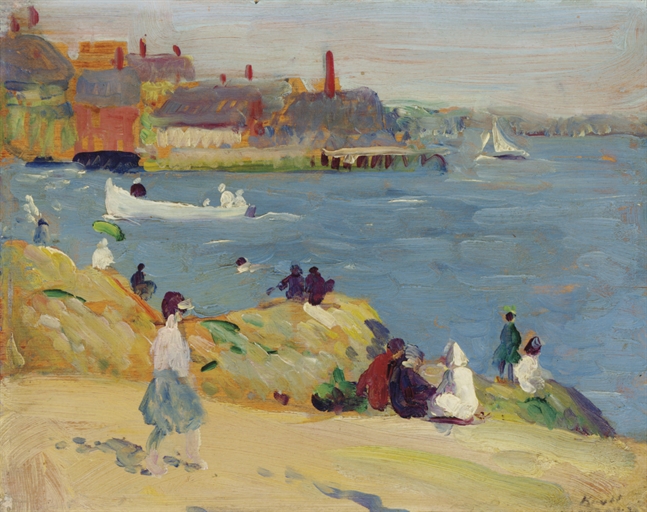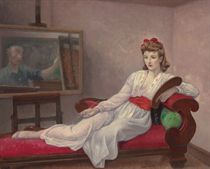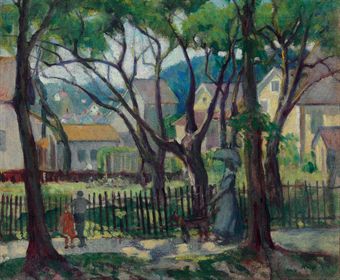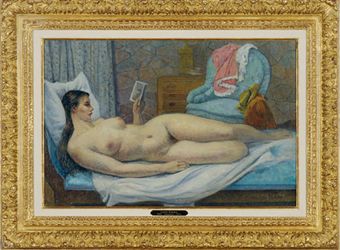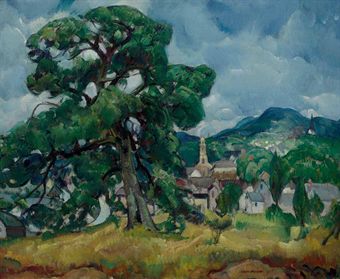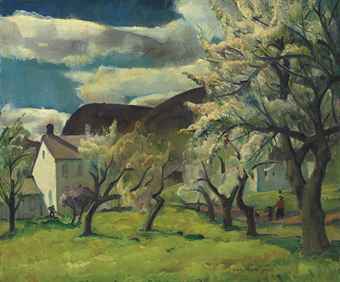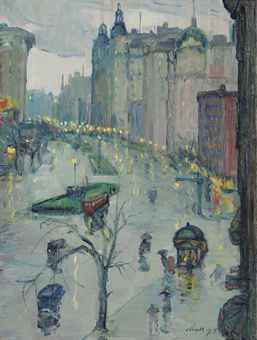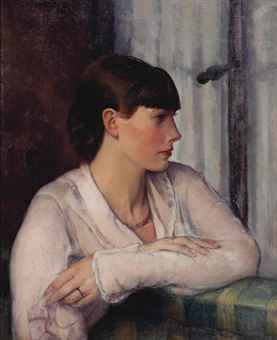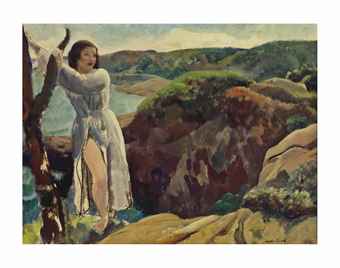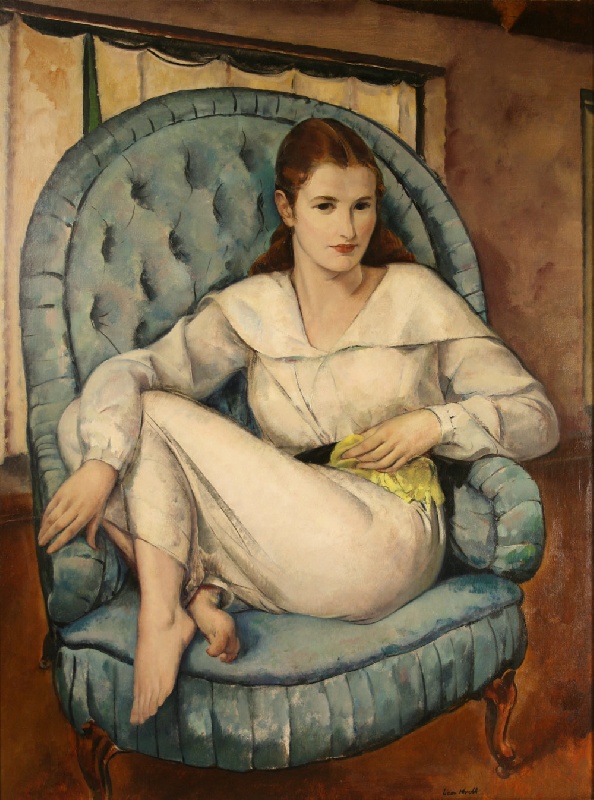Biography - Questroyal Fine Art, LLC, New York, New York
Leon Kroll was born in New York City in 1884. His childhood interest in art developed into a career aspiration by the time he was a teenager. At the age of fifteen, Kroll took a job as an assistant to the then-President of the Art Students League, Charles Yardley Turner. Turner took note of the young artist’s potential and arranged for Kroll to register for classes at the Art Students League in 1901, where he thrived under the instruction of his first teacher, John Henry Twachtman.
In 1903, Kroll enrolled in classes at the National Academy of Design, where he earned a bronze medal for his still life work after only one year of courses. He continued to rise through the student ranks at the National Academy of Design: he earned four awards in 1904 and of the five paintings he submitted to the Academy’s 1905 selection jury, all were accepted for exhibition.
During Kroll’s time at the National Academy, he received the prestigious Mooney Scholarship that funded a trip to Europe to cultivate his ability as a painter. The artist arrived in Paris in 1908 and immediately enrolled at the Académie Julian, where he studied with French-realist painter Jean-Paul Laurens.
Kroll’s time spent abroad exposed him to several European artists who influenced his style exponentially: he first encountered the color planes of Cézanne three years after the artist’s death and was fascinated by the brilliant hues used by the impressionists including Renoir, Monet, and Pissarro.
In 1911, shortly after Kroll’s stateside return, he accepted an instructional position at the National Academy of Design; he demonstrated an exceptional capability as a professor, which led to later teaching jobs at the Art Students League, the Chicago Art Institute, the Pennsylvania Academy of the Fine Arts, and the Maryland Institute of Art.
Before he departed for Paris in 1908, Kroll spent the summer of 1907 in Maine with his close friend and fellow artist George Bellows. The rocky shores of Maine held great allure to American artists at this time; Monhegan, a favorite location of leading Ashcan artist Robert Henri and many of his students, had a particularly heightened sense of artistic glamour.
After returning from Europe, Kroll revisited Monhegan with Bellows in early 1913, where they worked alongside Henri and other members of his circle. From this trip, Kroll established friendships with several members of “The Eight” which included John Sloan, William Glackens, George Luks, and Arthur B. Davies and also resulted in an invitation to exhibit at the 1913 Armory Show.
The Armory Show effectively launched Kroll’s career as an artist and confirmed his status as one of the most famous realists in America; invitations to exhibit and subsequent awards followed from impressive institutions including the National Academy of Design, the Art Institute of Chicago, the Pennsylvania Academy of the Fine Arts, the Baltimore Pan-American Exhibition, and the Indianapolis Art Institute.(
Kroll spent the 1920s traveling back and forth between Europe and the United States: a brief trip to Europe in 1923 was spent in the company of French artist Robert Delaunay, a one-man show was held at the Art Institute of Chicago in 1924, and a prolonged visit to France lasted the following two years.
Seven years after his 1920 nomination for Associate membership to the National Academy, Kroll was elected an Academician to the respected institution—this was one of the many prestigious organizations that the artist belonged to throughout his career, which included the Philadelphia Art Club, the Boston Art Club, the American Academy of Arts & Letters, and the Légion d'Honneur. Kroll’s career took a new direction at the start of the 1930s when the artist first became involved in federal arts programs; he was commissioned to paint several municipal murals at locations that can be seen today in the U.S. Department of Justice Building, the auditorium at Johns Hopkins University, the Senate Chamber in the State Capitol of Indiana, and the war memorial in Worcester, Massachusetts.
Kroll’s accomplishments as an artist were celebrated in 1937 when the Worcester Museum held a retrospective of his work. Kroll continued to work during the later years of his life: he produced paintings at his studio in New York City, was actively involved in numerous organizations, and spent time in Gloucester, Massachusetts up until his death in 1974. Leon Kroll’s legacy as a talented realist painter is honored today through esteemed institutions including the Art Institute of Chicago, the Whitney Museum of American Art, the Indianapolis Museum of Art, the Metropolitan Museum of Art, and the Smithsonian American Art Museum.
Sotheby's 2007
LOT SOLD. 48,000 USD
Sotheby's 2011
LOT SOLD. 170,500 USD
Questroyal Fine Art, LLC, New York, New York
Leon Kroll (1884–1974)
Monhegan Seascape, 1913
Oil on panel
15 x 19 9/16 inches
On verso: LEON KROLL / Painted in Summer 1913
Leon Kroll (1884–1974)
Rockport, Maine
Oil on canvas
26⅛ x 32 3/16 inches
Signed lower left: Kroll; inscribed on verso: Rockport Main [sic]
Christie's 2008Pr.$13,750
Christie's 2010
Iona Robinson and Self Portrait of Kroll
PRICE REALIZED
$20,000
Pr.$40,000
Christie's 2012
Skinner 2014
The Frugal Repast
Leon Kroll
Barbara1930
48 x 36 1/4 inches oil on canvas


